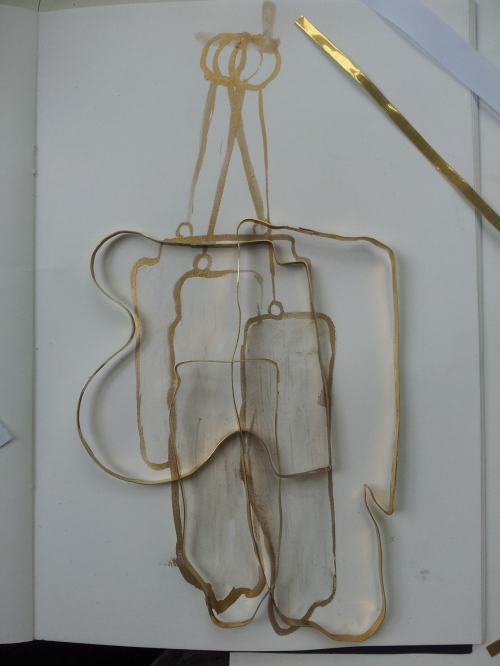
Valle Crucis offers so much to inspire artists that it’s difficult to narrow down but my focus here is the craftsmanship in the building and the repair, or interaction with the site visible or in some way palpable today. I am finding ways to explore and represent the unknown craftsmen and inhabitants of the Abbey through my own making.
Working my way through ‘Builders & Decorators, Medieval Craftsmanship in Wales’ yesterday I found myself wondering about angles and straight walls – how did you know what 90⁰ looked like in 1201? I remember my dad’s plumb-line and then I turn the page and find: “For this he used a plumb line – a ball of lead attached to a piece of string – which was amongst his personal processions.” Wonderful, simple, timeless technology.

Onsite the Medieval master mason created templates from wood, metal, or sometimes canvas (if you needed to transport it around with you of course), for the other stone masons to trace onto stone before carving. Simple technology.
My work often mimics the processes and techniques behind craft trades and disciplines and here I am interested in taking the plumb-lines and templates away from their intended functions. Without the need for a straight line a plumb-line is an object suspended from a piece of string, and without the need for uniformity a template is just a silhouette. As purely intriguing objects they can be appreciated for their narrative content alone, which is very similar to the way in which a museum presents its artefacts. Here, rather than their educational content ruling their purpose I am interested in mimicking these forms for their more ambiguous and poetic symbolism.







